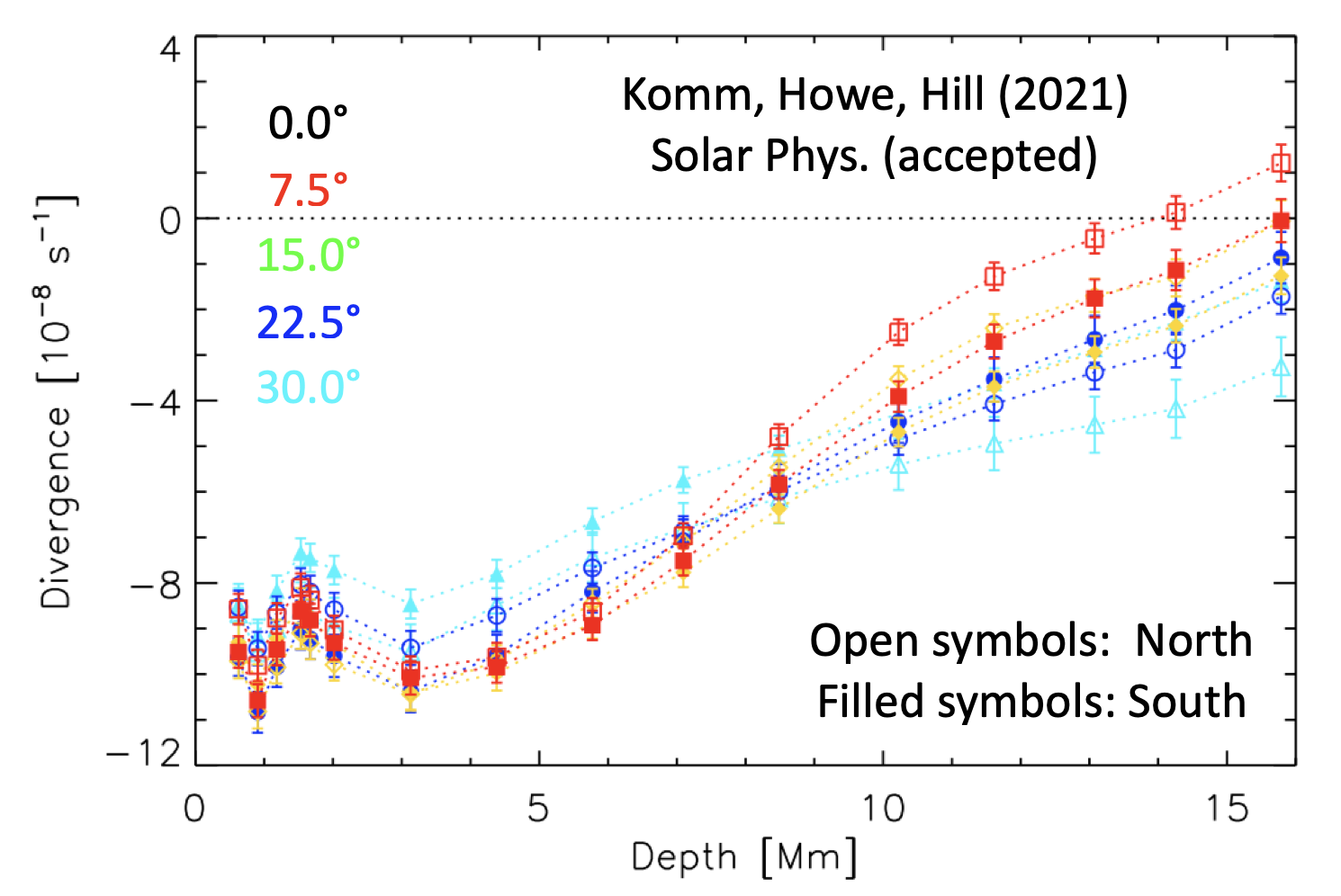Author: Rudi Komm
Dec 1, 2021

We studied the large-scale subsurface flows to a depth of about 32 Mm covering the near-surface shear layer (NSSL). We used helioseismic inversion products based on full-disk SDO/HMI Dopplergrams analyzed with ring-diagram analysis (RDA) using tiles with 30° diameter instead the commonly used 15° ones (http://jsoc.stanford.edu). This allowed us to determine subsurface flows at about twice the depth achievable with the commonly used 15°-tile RDA and we derived the solar-cycle variations of the zonal and meridional flow throughout this depth range. The solar-cycle variation of the zonal and meridional flow is clearly noticeable from the surface throughout the NSSL. Figure 1 shows that the dominant features of the zonal flow are bands of faster-than-average flow associated with Solar Cycles 24 and 25. The onset of the fast bands happens nearly simultaneously at all depths. For Cycle 25, the fast bands appear in the southern hemisphere about one year before those in the northern one and both fast bands appear several years before magnetic activity appeared at the surface in either hemisphere. The meridional flow shows a similar pattern after subtracting the temporal mean at each latitude. Bands of converging residual meridional flow move from mid- to low latitudes during a solar cycle throughout the whole NSSL. To illustrate the solar-cycle variation, we show in Figure 1 time-depth slices of the zonal flows averaged over both hemispheres from 60° (top) to 0° latitude (bottom) derived with 30°- tile RDA smoothed in time with a rectangular boxcar over 13 CRs. The temporal mean has been subtracted at every depth and latitude.
Komm, R. 'Subsurface Horizontal Flows During Solar Cycles 24 and 25 with Large-Tile Ring-Diagram Analysis'. Sol Phys. 296, 174 (2021). DOI:10.1007/s11207-021-01923-0